PharoDercks Galerie Berlin
PharoDercks Contemporary Gallery | Photos, Paintings, Post Cards, Berlin Art | Berlin Artists
Slider Title
Samuel Wiesemann
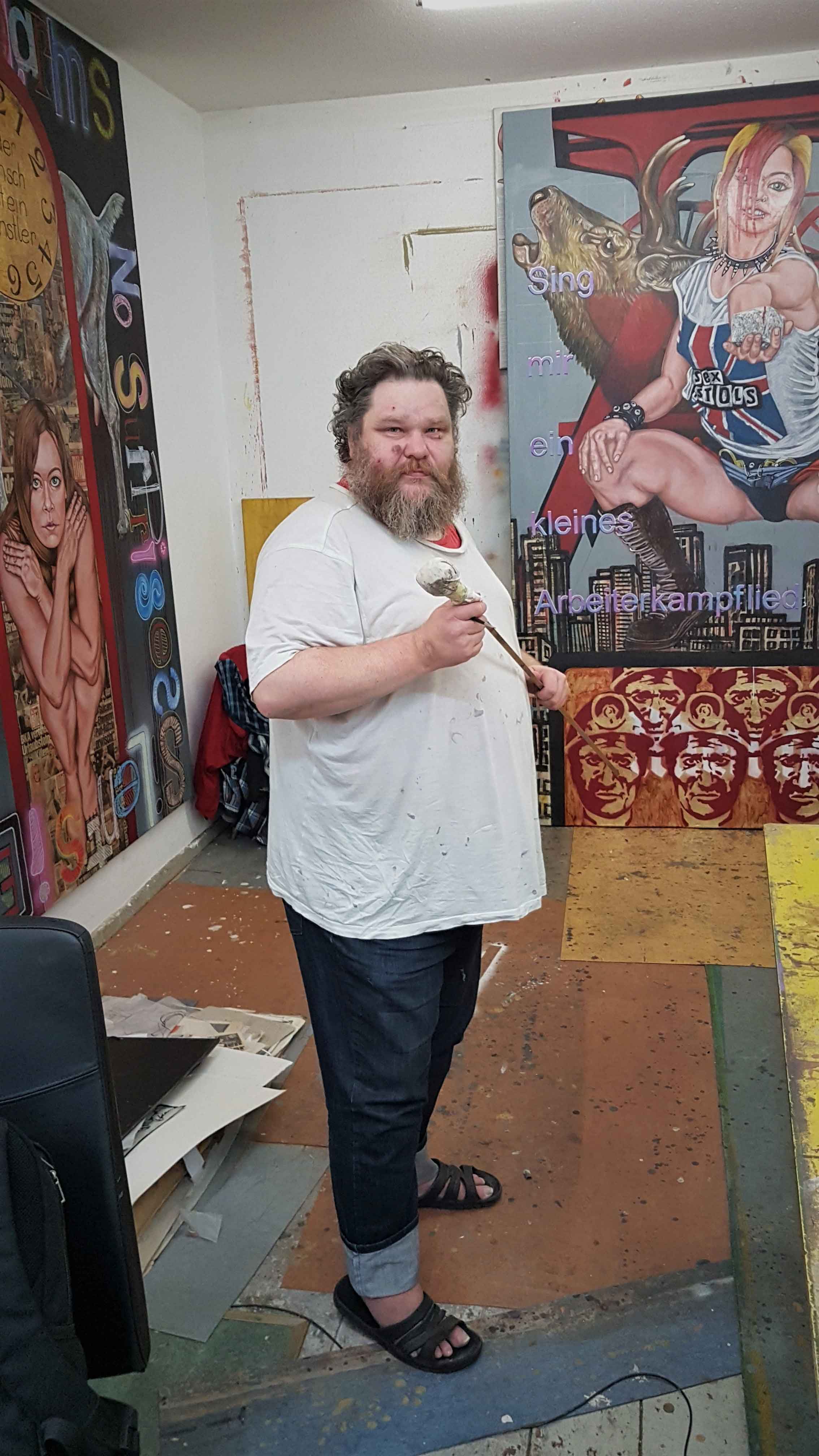
Balladen | Ballads
Modest Mussorgsky, with his ‘Pictures of an exhibition’ was not the first person in the art world to connect different forms of expression with each other. Modest attempted to describe his friend Viktor Hartmann’s pictures with music; Samuel Wiesemann chooses a similar path, just in a different direction. He describes ballads with his images, putting musical conversation and visual interpretations side by side. Samuel makes use of various materials like gouache, oil pastels, and markers, which he puts on paper. Even though he is known to use many more materials for a single piece, he restricts himself to these specific ones for the ‘Balladen’ series, which builds a specific style for this particular compilation. This flexibility with medium and results is a trademark of Samuel. He experiments with all kinds of techniques and resources as well as with varying fine art materials. His creativity is not confined to a single medium, and in his time as a fine artist he has not only displayed work in successful solo exhibitions and contributed to multiple collaborations, but has also worked on projects, live performances, and group exhibitions in multiple European countries.
Work
Click on the links to hear the songs that inspired the pieces (Links lead to YouTube)
Gelem Gelem
Textversion von Žarko Jovanović übersetzt ins Deutsche
Auf meinem sehr sehr langen Weg Traf ich viele schöne Roma Auf diesem sehr sehr langen Weg Begegneten mir viele glückliche Roma
Ich hatte einmal eine große Familie Die Schwarze Legion ermordete sie Kommt mit mir Roma aus der ganzen Welt Für die Roma die Straßen geöffnet haben Jetzt ist die Zeit, steht auf Roma, jetzt Wir steigen hoch, wenn wir handeln
Refrain:
Ahai, Roma, ahai Kinder, Ahai, Roma, ahai Kinder!
Masel Tov / Reb Shmuels Glücksmühle
Vu nemt men a bissale Mazel
Lyrics-Jewish Folk Music Benzion Witler(1907–1961)
Vu nemt men a bisele mazl,
Vu nemt men a bisele glik,
Er reydl zol zikh iberdreyen
Un breyngen dos mazl tsurik.
Di velt iz bashafn far yedn,
Bashafn far yedn va glaykh.
Oy, vu nemt men a bisele,
Khotsh nor a bisele mazl, a bisele glik?
Oy, vu nemt men a bisele Khotsh nor a bisele
mazl, a bisele glik?
Vi mentshn zol zikh eyn zel mazl
Zer loikhn zer yuddn zer gik
E nasah vol zeys oyf dos mazl
Ken mumer nit habn zurik
Oy, vu nemt men a bisele,
Khotsh nor a bisele mazl, a bisele glik?
Oy, vu nemt men a bisele Khotsh nor a bisele mazl, a bisele glik?
Oy, vu nemt men a bisele,
Khotsh nor a bisele mazl, a bisele glik?
Oy, vu nemt men a bisele
Khotsh nor a bisele mazl, a bisele glik?
Oy, vu nemt men a bisele mazl, a bisele glik?
Oy, vu nemt men a bisele mazl, a bisele glik?
Oy, vu nemt men a bisele mazl, a bisele glik?
Oy, vu nemt men a bisele,
Khotsh nor a bisele mazl, a bisele glik?
Oy, vu nemt men a bisele
Khotsh nor a bisele mazl, a bisele glik?
Zauberland ist abgebrannt (Magicland is burnt down)
Zauberland
Die Wolken ziehen
Von West nach Ost
Ich lieg’ im Bett
Und denk’ ein Bild
Und wie es früher war
Zauberland ist abgebrannt
Und brennt noch irgendwo
Zauberland ist abgebrannt
Und brennt noch lichterloh
Der Himmel glüht
Wie heißes Eisen
Ein kleiner Vogel
Singt ganz leise
Unser Lied, sieh da
Zauberland ist abgebrannt
Und brennt noch irgendwo
Zauberland ist abgebrannt
Und brennt noch lichterloh
Das Traumtier geht
Auf weite Reise
Und grauer Regen
Löscht die Feuer
Ach, küss mich noch einmal
Zauberland ist abgebrannt
Und brennt noch irgendwo
Zauberland ist abgebrannt
Und brennt noch lichterloh
Zauberland ist abgebrannt
Und brennt noch irgendwo
Zauberland ist abgebrannt
Und brennt noch lichterloh
Hommage an Wladimir Wyssozki (Hommage to...)
Refrain
Und weiter geht die Wolfsjagd, diese Teufelsfalle!
Ob alte, junge, los, macht diese Bestien tot!
Die Treiber schreien, Hunde geifern Gift und Galle.
Das Blut im Schnee ist wie die Lappen rot, so rot.
Kein Versagen durch zitternde Hände,
Man treibt mit uns ein teuflisches Spiel.
An dem Strick ist die Freiheit zu Ende,
Uns zu treffen dort, braucht es nicht viel.
Die Natur hat uns Wölfe belogen.
Rote Lappen am Strick, das heißt Schluß.
Angst, die wir mit der Muttermilch sogen:
Roter Lappen ist schlimmer als Schuß.
Kräftig, schnell unsere Kiefer und Beine.
Warum sind wir, mein Leitwolf, so dumm?
Statt zu sterben, spring über die Leine!
Warum dieses verbot, sag, warum?
„Das ist so schon seit ewigen Zeiten!“
Spür, wie meine Zeit ein Ende nimmt,
Einer zielt auf mich, lächelt von weitem,
Das ist er, für ihn bin ich bestimmt.
Also weg mit absurden Gesetzen!
Zu dem Lappenstrick im schnellen Lauf!
Meine Lebensgier siegt über Fetzen,
Hinter mir schreien alle laut auf.
Los, die Kräfte zusammen und fliehen!
Gestern ist nicht mehr heut, tut mir leid,
Spüre, wie sie den Kreis um mich ziehen,
Hab mich aus der Umzinglung befreit.
Hagia Sophia
Unter deinen weißen Sternen Text nach Esther Ofarim
Unter deinen weißen Sternen Gib mir Deine weise Hand Meine Worte, sie sind Tränen – nimm sie auf in Deine Hand. Wenn es Nacht wird, lass sie funkeln, Sterne tief in meinen Blick. Ruhe find ich dann im Dunkeln, schenk die Tränen Dir zurück.
Du allein hörst, was ich frage, Du allein kennst meinen Schmerz. Sieh das Feuer, das ich trage Und es brennt in mir das Herz. In den Kellern, den Verließen Geht die Freiheit in den Tod Über Häuser, über Dächer Rufe ich: „Wo bist Du, Gott?“
Ruhelos such ich nach Dir, Hinter mir jagt her der Tod. Für dies Lied nur gönn` ich Rast mir und ich sing` zu Dir, oh Gott Unter deinen weißen Sternen Gib mir Deine weise Hand. Meine Worte sind nur Tränen, Nimm sie auf in Deine Hand.
Samuel Wiesemann
Exhibitions
The work of Samuel Wiesemann
At first sight jarring and provocative, afterwards disturbingly uncomfortable – the society types that are brought into view in Samuel Wiesemann’s work appear iconically. In the style of the proletariat cult, the artist seeks out current society types in order to spread them as templates of collective destinies.
The structure is always the same. A square surrounds a circle that’s placed in the middle. In this way, the circle is anchored statically and opens up a new space for image and meaning within itself.
Centered inside as a sociological icon is the object of desire, as if framed by a halo. These icons represent the Berlin working class, single mothers, recipients of Hartz4 (the German welfare program) or drunken artists.
Popular slogans, historical culture references and a number of props from daily life build a network of narrative traces and contradictions. Together, they open a area of tension between a contemporary fairytale landscape and a memorial for fallen next-door heroes or those still clinging to life.
Samuel Wiesemann describes his artistic activity as dialectal painting. What is meant by this is a figurative conversation, in which thesis and antithesis are formally and substantially interlinked like sweet and bitter tastes. As a result, the alleged beauty at once seduces and shows the fangs of its creepy grimace.
In addition to the dramaturgical social upbringing of Bertold Brecht, Wiesemann counts other artists like Otto Dix, Max Beckmann and Alexander Michailowitsch among his major influences.
In his paintings, illusions and ambiguities are dialectally contoured; they show what should be shown: fairy tales, dreams, fool’s games and infatuation with a bitter realism.
[original text: Dr. phil. Larissa Kikol | translation: Jon Willis]
artistic carer
Solo Exhibitions:
2019 „Balladen“ works on paper, PharoDercks Gallery Berlin
2017 „Wurst Club Ikonen“ painting and mixed technics on canvas, Zengreus Project Koch / art gallery Berlin
2013 „Befreie den Pflasterstein“ mixed technics, lino cut und spray method on paper, Milchhof Pavillon Berlin
2012 „Call Alice“ painting, oil painting on canvas, Galerie GAD Berlin
2011 “Die Transzendenz der Revolution” painting, oil painting on canvas, Galerie GAD Berlin
Group exhibitions international
2016 „Worst Club I“ painting, oil painting on canvas, curated by Fredie Beckmans artist clubkk Arti Amsterdam
2009 Edviks art gallery Stockholm,
2009 Worstclub Performances with Fredie Beckmanns in Antwerpen and Utrecht
2006 „Brothers in Arms“ mixed technics, lino cut and spray technics on paper, Museum MAN Liverpool, partipicion Liverpool Bienale
2005 „Berlin Double Soiree at the Pool”, mixed technics, lino cut and spray technics on paper, Edmund Piper Museum MAN Liverpool
Participation in art fairs
2004 – 2009 1. bis 6. Berliner Kunstsalon
2008 – 2009 1. und 2. Super Market Stockholm
2007 – 2008 1. und 2. Tease Art Fair Köln
2011 Restaurant / Gallery Viva Lund Sweden
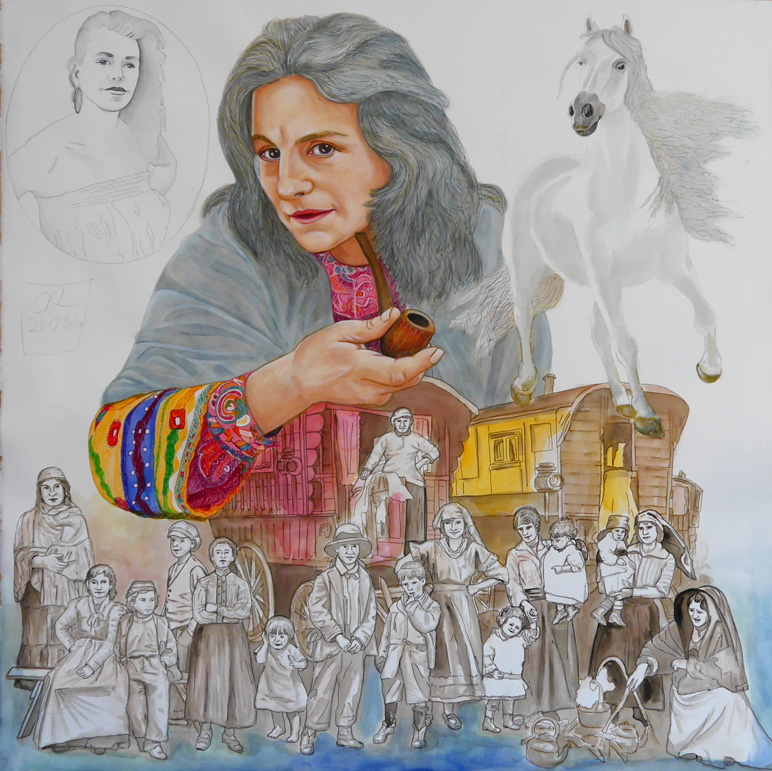

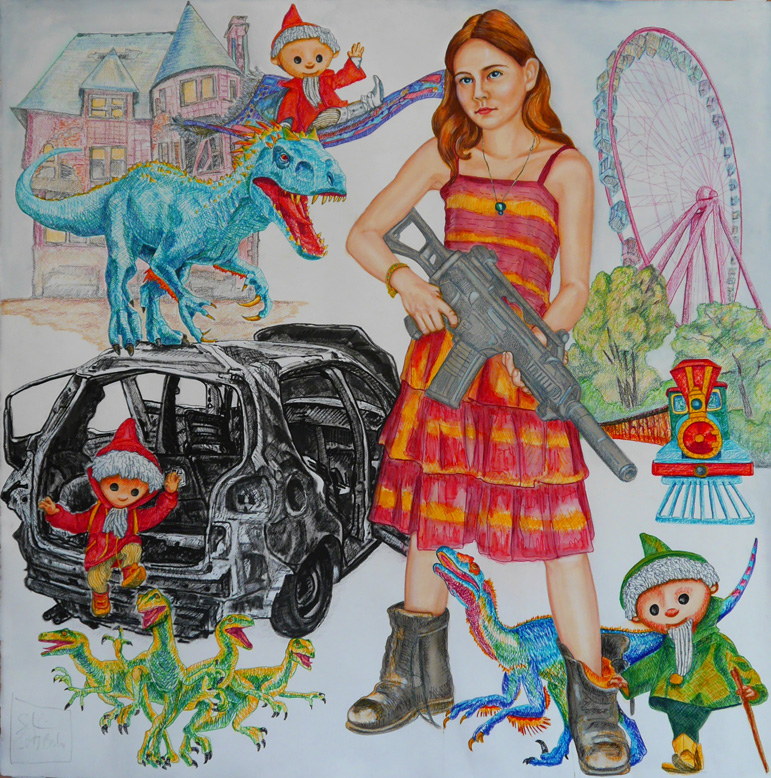
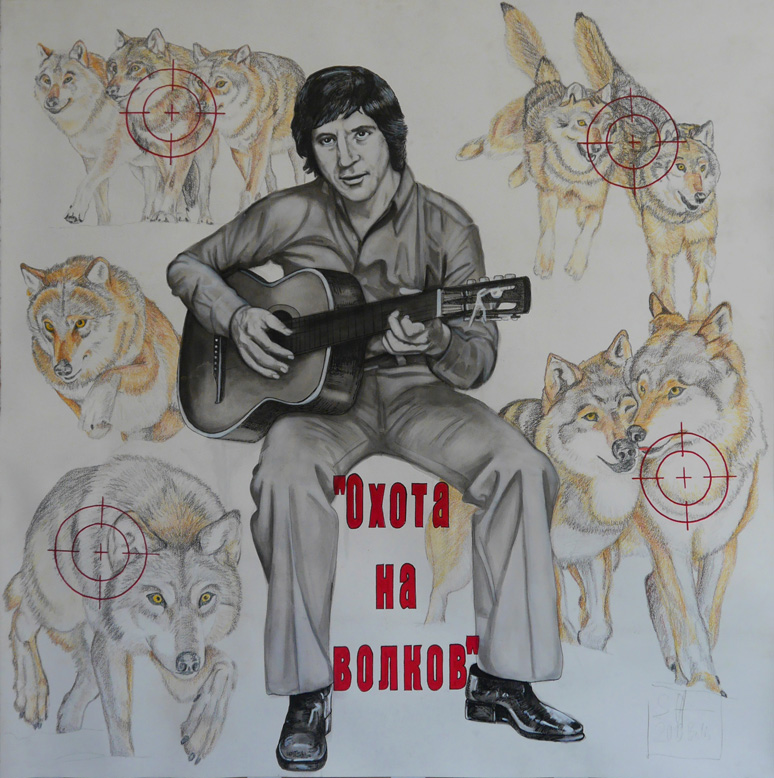
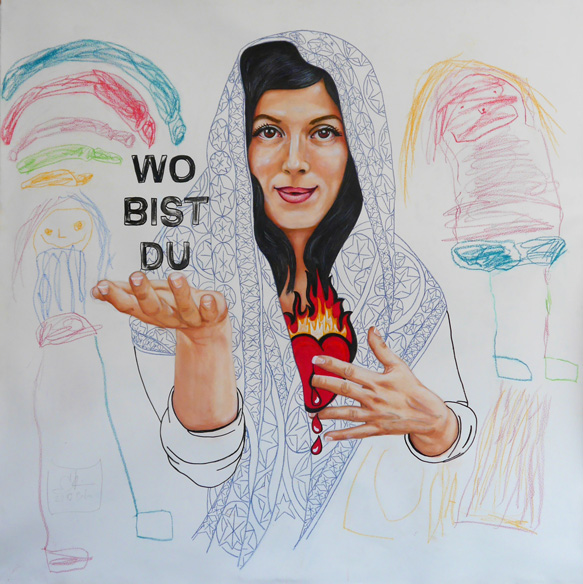
 Deutsch
Deutsch English
English